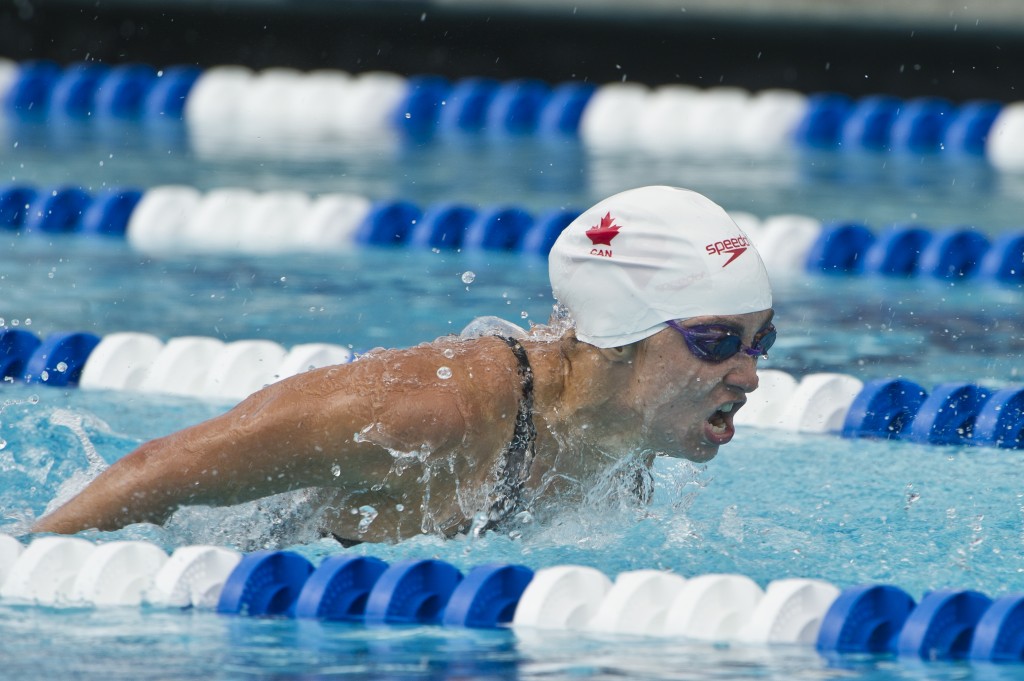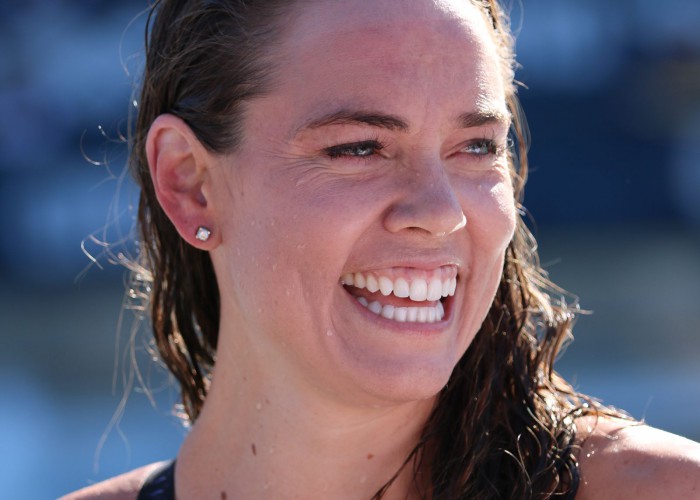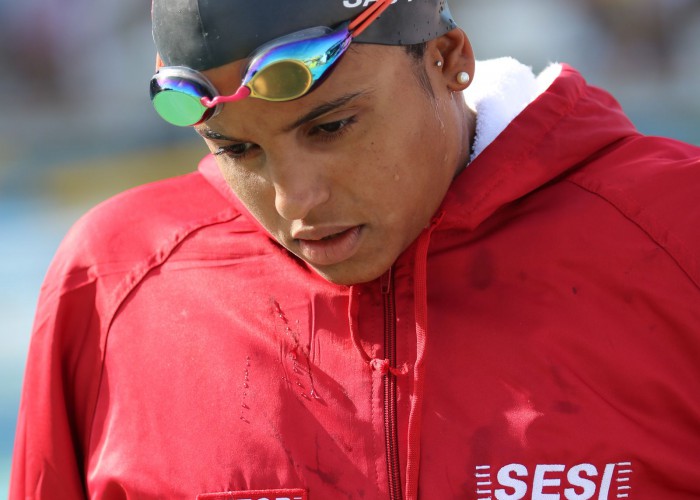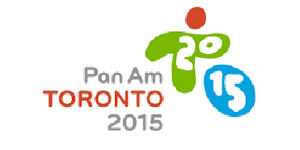2015 Pan American Games Swimming Preview: Women’s Edition

Coverage of the 2015 Pan American Games is sponsored by Triton Wear. Visit Swimming World’s event landing page for results and more!
Commentary by Jeff Commings, Swimming World Senior Writer
The United States isn’t sending its “A” team to the swimming competition at the Pan American Games next week in Toronto, but that doesn’t mean the competition will be devoid of some fast times and intense races.
Squads from Canada and Brazil will feature athletes who will also compete at the world championships, and we’ll see how they perform in Toronto two weeks before worlds. Some might not put in a full taper at Pan Ams, but will still be very strong. Today, we’ll preview the women’s competition, where several world-ranked times will put a spotlight on a meet that often carries less weight than rival continental championships such as the Asian Games and European championships.
From the first Pan American Games in 1951 to the 1987 edition, USA Swimming deemed the event as the top international competition for its athletes, and sent the best to race against other countries in North and South America. Since the 1991 Games, USA Swimming has sent a “B” squad to the meet, though several Olympians have come from those teams.
Looking at the list of 40 athletes on Team USA’s roster, we could see more than a handful of next year’s Olympians come from this Pan American Games team.
Four Olympic medalists will give the United States a big boost in the pool, especially in the freestyle events. Allison Schmitt is the reigning Olympic champion in the 200 freestyle, and will be looking to return to top of the pyramid in the event after subpar performances in 2013 and 2014. Look for Schmitt to blow away the competition in the 200 freestyle, with teammate Kiera Janzen likely to get a medal. Canadians Emily Overholt and Katerine Savard could be big challengers as well.
Natalie Coughlin has been rebounding from the unfortunate food poisoning last summer that put her on the Pan American Games team instead of the world championship team, making a case that she will be one to watch at the Olympic Trials. Coughlin is currently the one to beat in the 100 freestyle in Toronto, though Canada’s Chantal Van Landeghem is the gold medal favorite in the 50 after winning bronze at last year’s Pan Pacific championships. Look for Amanda Weir to be tough in the 100 free, potentially giving the United States a 1-2 finish if Van Landeghem isn’t in the mix.
Caitlin Leverenz is also looking to make a statement in the IM events a year out from the Olympic Trials. Look for the 200 IM Olympic bronze medalist to dominate in both races, with her American teammates Meghan Small (200 IM) and Kate Mills (400 IM) also in the medal hunt.
Katie Meili has been on fire this season, posting a lifetime best at the Arena Pro Swim Series in Mesa in the 100 breast. She is quickly becoming the class of the U.S. field in the 100 breast, and we’ll see if the time she puts up in the event in Toronto will be the fastest time by an American in 2015. She’ll need to swim a lifetime best to keep up with Jamaican Alia Atkinson, who is using the Pan American Games as an appetizer for the world championships. Based on times the two have posted so far this year, the battle for gold could be decided by a few tenths of a second.
Hilary Caldwell won bronze in the 200 back at the 2013 world championships, and the Pan American Games will give her the opportunity to rehearse her race strategy before taking on the entire world in Russia. Dominique Bouchard is also swimming the 200 back at Pan Ams and worlds, and we could see a Canadian 1-2 finish in Toronto, unless Americans Clara Smiddy and Kylie Stewart can make some big improvements to get on the medal podium. Also look for 2011 worlds medalist Martha McCabe to be a strong force in the breaststrokes, particularly the 200 breast.
Brazilian Etiene Medeiros is best in the 50 backstroke, but it’s not on the schedule at Pan Ams. She’ll have to settle for the 100 back as her primary event, where she’ll race against Caldwell and American Olivia Smoliga. Medeiros is the 2014 short course world champion in the 50 back, while Smoliga won the 2012 short course world title in the 100 back. How will their short course prowess translate to the long course pool? Both will need to break 1:00 to win, and to give them confidence going into the next year of training. Medeiros might not be fully tapered, as she will be heading to worlds in Russia, but still look for her to be the leader of a increasingly strong Brazilian women’s team.
Daynara de Paula is bound to face off against Americans Kelsi Worrell and Gia Dalesandro in the 100 butterfly, a race that might be spoiled by a strong finish from Savard. A come-from-behind finish is how Savard won the 100 fly at last year’s Commonwealth Games, and she could use her endurance base to reel in the sprint-based Worrell and De Paula. Worrell, however, has shown some gains in her endurance with a win in the 200 fly at the NCAA championships, and swimming fans are excited to see how her barrier-busting 100-yard butterfly from this past March will translate in the long course pool.
Audrey Lacroix will clearly be the class of the field in the 200 butterfly. She comes into the meet ranked seventh in the world with a 2:07.63, and the next highest ranked person is Mills, a full two seconds back. Mills will have a tough race with Brazil’s Joanna Maranhao, who broke 2:10 at the Maria Lenk Trophy meet to move up in the world.
Even though Canada and Brazil will have some of their best athletes at Pan Ams, they can’t match the top-to-bottom depth of the United States for the relays. Though USA Swimming did not appear to send any relay-only swimmers to Pan Ams, there are plenty of swimmers who can join Coughlin and Weir on the 400 freestyle relay. And the 400 medley relay might get a bit of a push from Canada, who won the bronze medal in the event at last year’s Pan Pacs, but with Meili on breaststroke, the Americans have the advantage.






